
Earlier this month, Statistics Canada released a report looking at the income and capital gains of the wealthiest Canadians in 2021. The findings are startling.
The total incomes of the top 1 per cent of tax filers, excluding capital gains, rose by 9.4 per cent in 2021. As StatCan explains, “This [income growth] occurred in the context of COVID-19 pandemic restrictions easing, many government benefit programs winding down, the labour market recovering, and the Canadian house prices and stock market indexes increasing in 2021.”
In other words, the wealthiest benefited from both growing earned income and gains from capital, at the same time that many workers were seeing benefit reductions and paltry wage growth amid a cost-of-living crisis.
By contrast, workers’ average hourly wages grew by just 3.9 per cent between 2019 and 2021. (Average wages actually fell between 2020 and 2021 because the share of low-wage jobs recovered post-pandemic and thus affected the composition of jobs in the data sample.)
To put things in perspective, it took workers nearly a decade to see their wages grow as much as the 1 per cent managed to realize in one year. Between 2012 and 2021, average hourly wages increased by roughly 9.6 per cent.
The average weekly earnings of workers fared little better. Year-over-year, weekly earnings rose by 3.1 per cent in 2021. Among the lowest-paid occupational groupings — those working in accommodation and food services — average weekly earnings managed to rise by 4.8 per cent in 2021, which sounds relatively impressive, until you realize that this amounted to a weekly salary of just $458 per week. Meanwhile, the average annual income of the top 1 per cent, $579,100, translates into weekly pay of $11,137. Nice work if you can get it.
What’s more, the very wealthiest among the top 1 per cent saw the largest income gains. Tax filers in the top 0.1 per cent increased their annual incomes by 17.4 per cent (to $2,086,100), while those in the top 0.01 saw incomes gains of 25.7 per cent (to $7,731,400).
While investment income plays a large role in the total pay of the wealthiest Canadians, it was actually wages and salaries that drove the 1 per cent’s income growth in 2021. The top 1 per cent saw average wage and salary gains of 12 per cent. Wages and salaries in the top 0.1 per cent rose by 24.6 per cent, while those in the top 0.01 per cent went up by 34.5 per cent.
This is not to say, however, that the 1 per cent’s investment income growth wasn’t also noteworthy. Dividend growth, in particular, shot way up for the richest Canadians. These top tax filers reported an average of more than $90,000 in dividend income in 2021, a growth of 12.9 per cent from the previous year. Again, the very wealthiest made out like bandits. The top 0.1 per cent took home $429,500 in dividends (up 19.2 per cent), while the top 0.01 received $2,009,700 (up 26 per cent).
Keep in mind, this is passive income we are talking about here. These 1 percenters received dividend income simply because they own shares. It is “earned” income not because they worked or did anything in particular for it, but because they have a claim on ownership.
The situation is even more alarming when capital gains are also considered. Because the wealthiest tax filers also own considerable assets, and receive money when they sell them, assessing their total pay requires an accurate picture of realized capital gains.
As StatCan reports, overall, realized capital gains “rose sharply” in 2021, owing to the post-pandemic rebound in stock and housing prices. Yet the receipt of capital gains is highly skewed toward the very wealthy. Only 12.2 per cent of tax filers received capital gains at all in 2021.
This makes obvious sense. Excluding pension funds, most workers own no “capital” from which to realize gains, owning only a home, if they’re lucky.
But even among the small share of Canadian tax filers who received capital gains in 2021, only 5 per cent reported gains of $131,100 or more. In other words, it is a sliver of the richest that earn large sums of money simply by owning and selling assets, such as stocks and bonds.
When income and capital gains are considered together, the post-pandemic income growth of the 1 per cent is truly staggering.
In 2021, these wealthiest tax filers received $811,800 in total income, up 20.5 per cent from the previous year. And you guessed it, the richer you are, the better you did in 2021. The top 0.1 per cent pulled in $3,230,000, up 27.6 per cent. The top 0.01 per cent managed a whopping $12,542,100, up 30 per cent from 2020. As the report concludes, “These levels of income including capital gains were much higher than they were at any other point in the past 40 years, accounting for inflation.”
This outrageous growth in the incomes of the richest comes after the pandemic briefly reduced this group’s fortunes. Last year’s version of StatCan’s “high income Canadians” report noted that while the average incomes of all tax filers rose by 5.5 per cent in 2020, those of the wealthiest 1 per cent fell, with the largest declines among the top 0.01 per cent.
In fact, owing to pandemic benefits, such as the Canada Emergency Response Benefit (CERB) and its successors, as well as Employment Insurance enhancements, the bottom half of the income distribution saw average income growth of 19.2 per cent between 2019 and 2020. The activist role of the federal government reversed the fortunes of many.
As pandemic benefits wound down in 2021 and huge numbers of workers were thrown back into an uncertain labour market with the virus still raging in many parts of the country, the incomes of the poorest half of tax filers fell significantly. Single earners in the bottom half of the income distribution lost an average of $1,400 from 2020 to 2021, and reported an average income of just $21,100.
As the Auditor General’s (AG) 2022 report on COVID-19 benefits concluded, the CERB and its successor programs reduced poverty and helped to kickstart the post-pandemic economic recovery. The AG also found that some lower-income recipients of pandemic benefits received more during lockdowns than they had previously earned working for wages. While the report characterized this “problem” as a “disincentive to work,” it is more obviously a ringing indictment of low-wage employment. Now that things are back to “normal,” the economy is clearly rewarding those making the greatest productive contributions.
Of course, growth at the top alongside stagnation at the bottom inevitably intensifies inequality. As StatCan’s recent release summarizes, the share of total income going to the top 1 per cent increased from 9.4 per cent in 2020 to 10.4 per cent in 2021, “the highest level posted since 2015.” When capital gains are included, the share going to the top 1 per cent rises to 13.4 per cent, up from 11.5 per cent the year prior.
There is nothing inevitable about the details that StatCan reports. That our economy distributes income so unequally is not the outcome of markets naturally working themselves out or rewarding the most productive. Rather, the distribution of income in this country is the result of policy choices.
We elect governments that construct the ‘rules of the game’ and those rules can be changed. Reforms to alter the ‘pre-distribution’ of income, such as encouraging unionization and using industrial policy to direct investment and plan production, can generate greater equality while enhancing democracy. As David Doorey and Jim Stanford recently argued, union density lowers the share of income going to the top 1 per cent.
Equally important, we can enhance our social welfare state by providing larger benefits to those who need them, increasing income security across the population and throughout the life cycle. No economy, not even a socialist one, can do without a robust social welfare state to redistribute income from those currently working to those unable to work (parents, children, the disabled, the unemployed, retirees, etc.).
We simply shouldn’t allow levels of inequality like those reported by StatCan to persist. The time to fight back is long overdue.
Recent Class Struggle Issues
- November 13 | The Federal Ban On Scabs Is A Major Victory For Labour
- November 6 | Striking Seaway Workers Showed The Power Of ‘Essential’ Labour
- October 30 | Canadian Labour Is Lining Up In Support Of Palestinians
- October 23 | Fred Hahn Deserves Our Full Support Against Pro-Israeli Smears


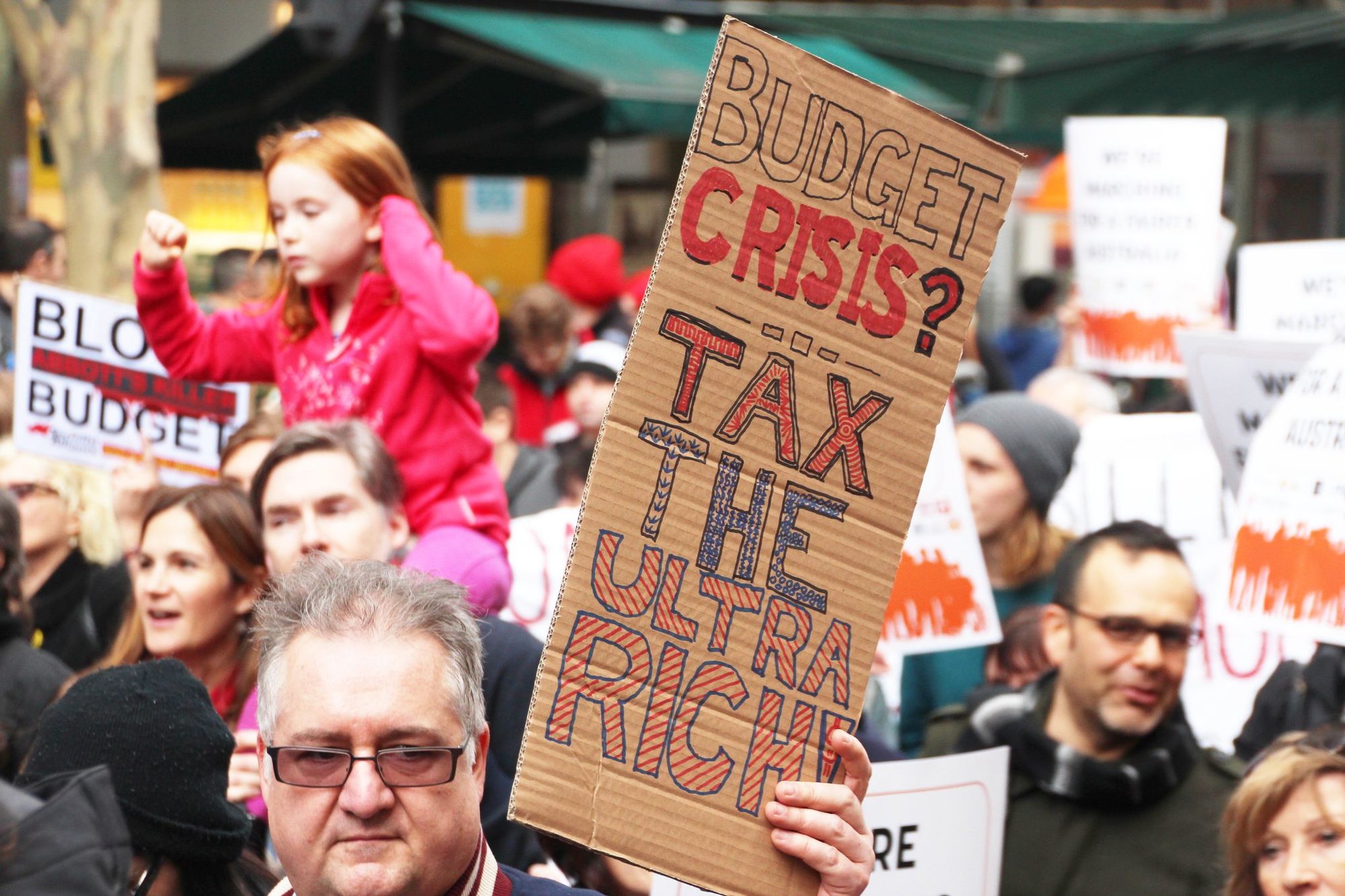
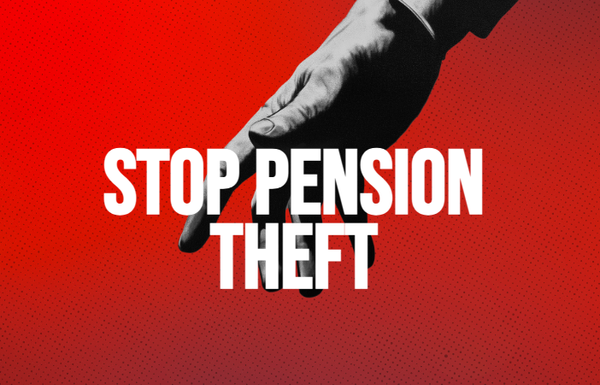
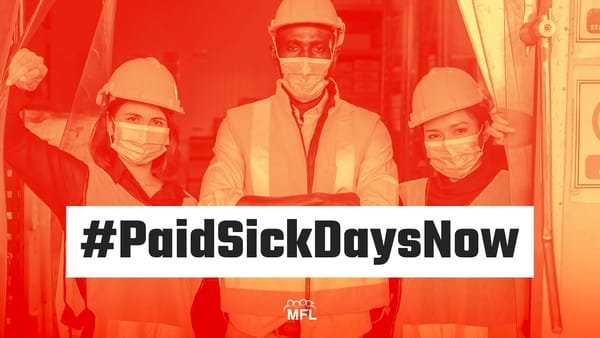
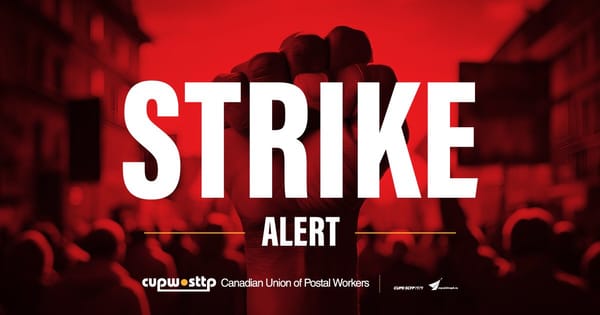

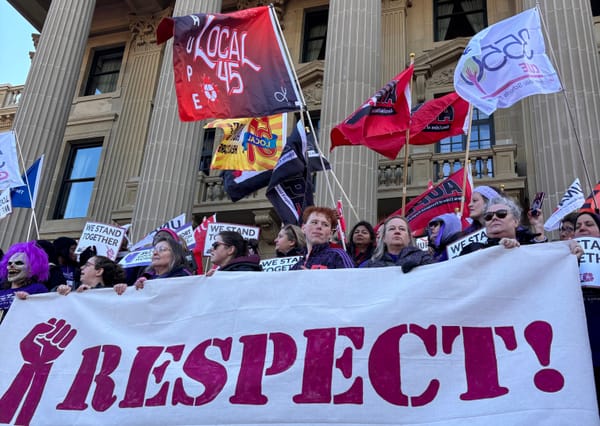
Member discussion